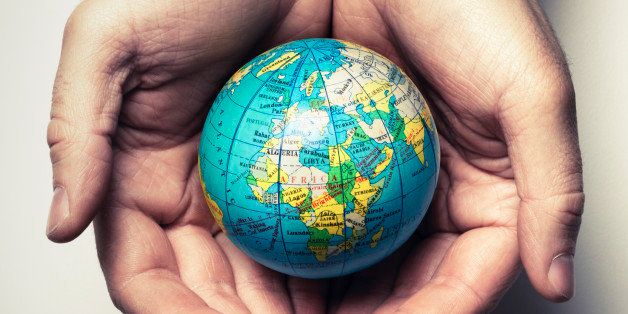
When I think about how people interact with the concept of peace, I imagine Sandra Bullock's character Gracie Hart in the 2000 film Miss Congeniality. She is working undercover as a Miss United States beauty pageant contestant and, as all contestants, must undergo a live interview. The pageant host asks her, "What is the one most important thing our society needs?" After a serious response concerning "harsher punishment for parole violators," and an awkward pause from the crowd, Gracie adds: "And world peace!" Needless to say, the audience is pleased.
While a satirical example, the clip illustrates a canned understanding of peace most people have. The response of "world peace" is an expected and politically correct answer to the question of what we can do to change society. It is accepted as a noble desire and goal.
If you ask people what they think of the oft-repeated refrain (a question I pose to my students in the beginning of each semester), they tend to believe that world peace is a great idea in theory but implausible in practice. "It will never happen," they say.
"World peace" is a notion that calls up idealistic harmony on the one hand, and Miss America pageants on the other. However, our blanket answers revolving around the installation of "world peace" miss how terrifically nuanced the concept of peace is.
In his introduction to the Handbook of Conflict Resolution, Charles Webel addresses one of the nuances of peace when he presents peace as having a tripartite social dimension that describes where and how we experience (or don't experience) peace. Webel refers to this model (which he adapted from Freud) as a metapsychology (or political view) of peace and divides it into three parts concerning inner, outer, and interpersonal peace.
Inner Peace refers to our emotional life, the type of peace we mean when we talk about "peace of mind." This does not just mean calmness and quiet, this inner peace also refers to the way we think about ourselves and others.
We can have harmful thoughts about ourselves: I suck, I'm unattractive, I'm stupid, I'm bad at that, I'm not a good person, I hate myself, etc. We often think that we have to just get rid of the anger and hatred we have toward others, but the anger and hatred we feel toward ourselves largely drives how we behave in the world.
In order to treat others with kindness, love, and compassion, we have to learn to give each of these things to ourselves first.
Outer Peace refers to "sociopolitical, domestic and international peace," or the way we exhibit peace economically (i.e., through political- and market-driven forces). The ideologies and policies we cultivate toward others flows from our sense of trust and our ability to cooperate with groups that may be outside of our inner circle. This area of peace may be best reflected in structural dynamics (both violent and non-violent in nature) that social authorities put in place.
Interpersonal Peace refers to how we interact with people on a daily basis: how we treat fellow metro passengers, the Starbucks barista, drivers who cut us off in traffic, etc. If we have a healthy sense of inner peace, we can move through the outer world in a peaceful way as well. If our inner peace is disrupted, then our demonstration of interpersonal peace becomes much more difficult.
These three areas of peace are not exclusive, they interact with and inform each other. There is a balance that has to happen between all three, and it takes work to maintain that balance.
Not every environment is conducive to maintaining one, let alone three, of these areas of peace. For example, Webel mentions that living in an impoverished environment means that it will be more difficult to sustain these forms of peace. Creating and nurturing inner peace will be difficult if one lives in a war-zone, or in an area suffering from a shortage of resources.
A broad proclamation for a desire of "world peace" flatly assumes that there is one way to have peace, ignores the dynamics that contribute to developing a single unit that one might describe as peaceful, and reinforces the misperception of peace as passive, as something that happens to us rather than something we put into action.
This small variety of peaces highlights the diversity of peace that exists, and also questions what "world peace" really consists of: is it inner, outer, or interpersonal peace? Can we have world peace if only a fraction of this trio is functional? Probably not.
Looking at peace through a metapsychology may help make the prospect of "world peace" more attainable because it breaks peace down into manageable and recognizable parts. Rather than see "World Peace" as an audience-appeasing catch-phrase, when reduced to smaller portions, we can begin to form actionable plans that address and transform our inner, outer, and interpersonal spaces.